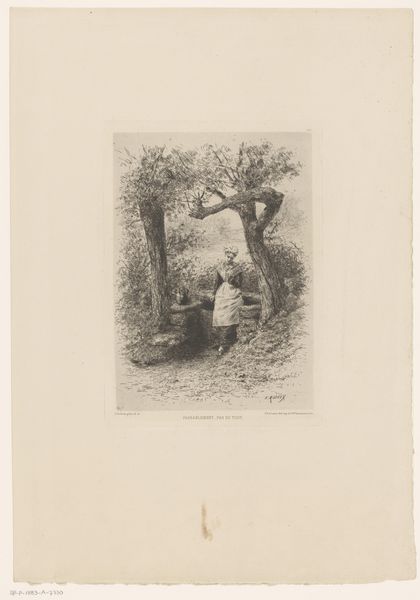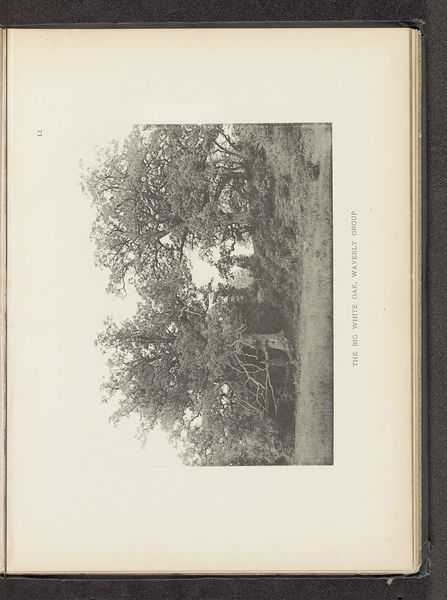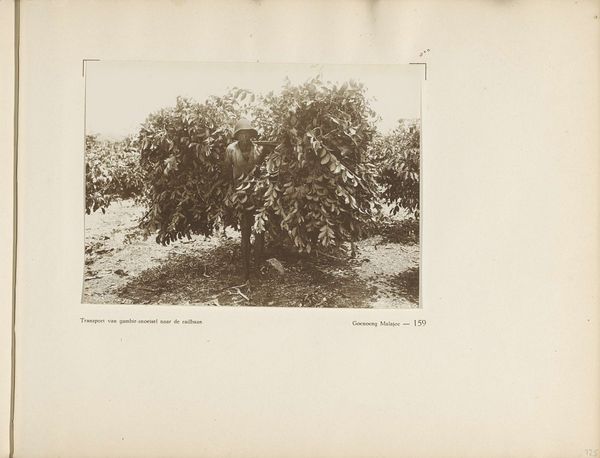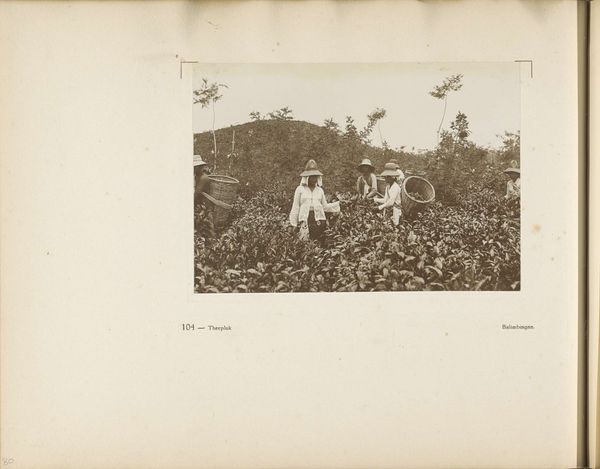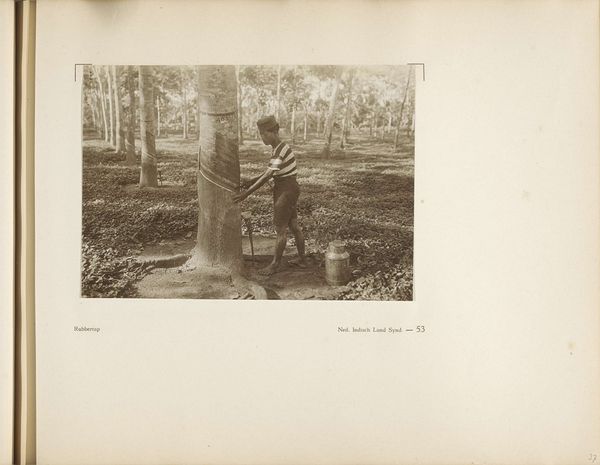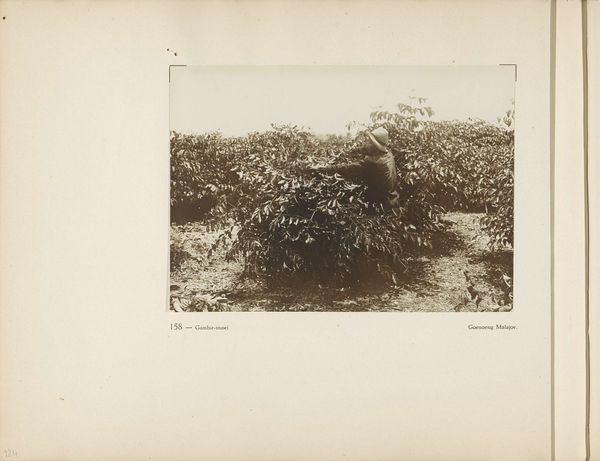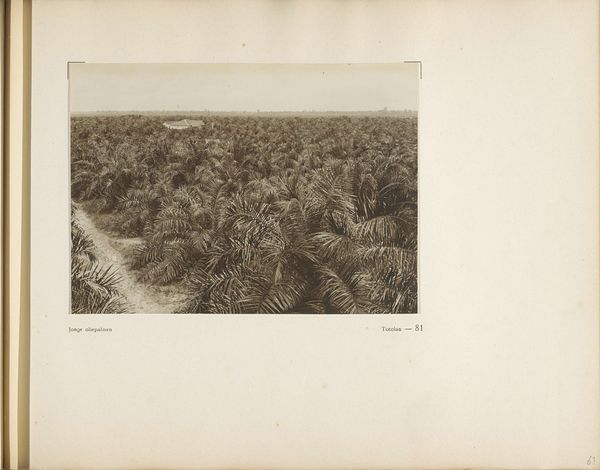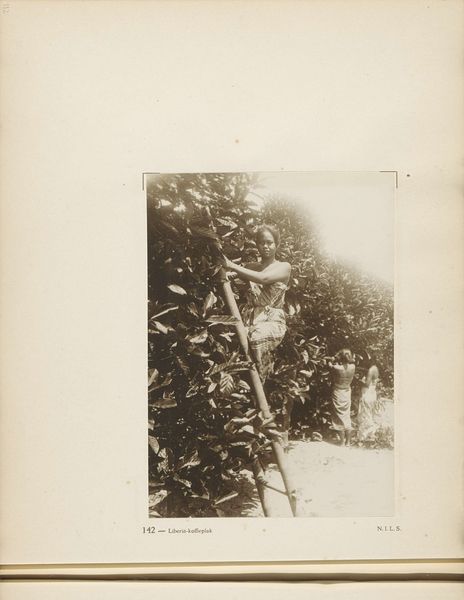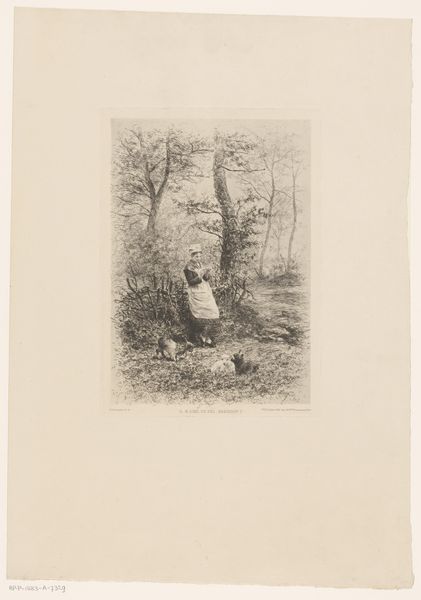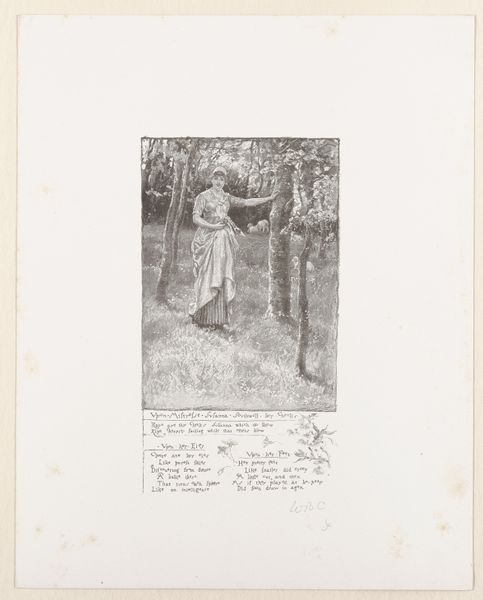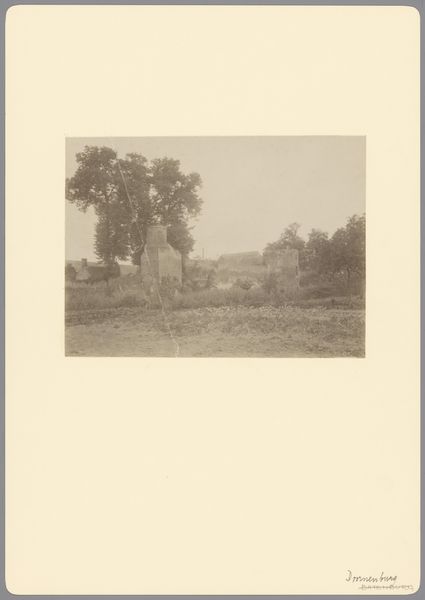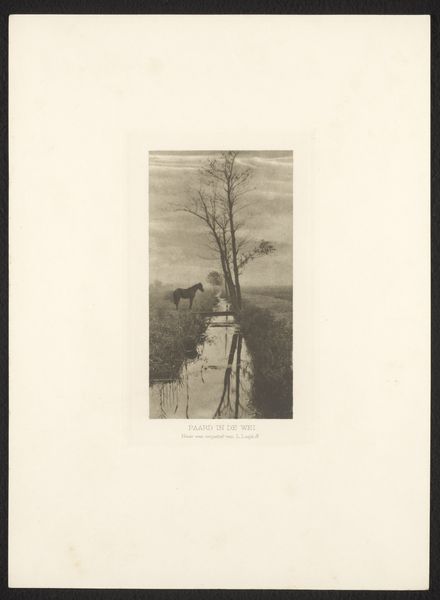
Pagina 128 van fotoboek van de Algemeene Vereeniging van Rubberplanters ter Oostkust van Sumatra (A.V.R.O.S.) c. 1924 - 1925
0:00
0:00
print, photography, gelatin-silver-print
# print
#
landscape
#
photography
#
photojournalism
#
gelatin-silver-print
#
genre-painting
Dimensions: height 240 mm, width 310 mm
Copyright: Rijks Museum: Open Domain
Editor: Here we have a page, specifically page 128, from a photo book belonging to the Algemeene Vereeniging van Rubberplanters ter Oostkust van Sumatra – or A.V.R.O.S. The photograph is a gelatin silver print, dating to around 1924 or 1925. The image seems quite calm, a serene landscape maybe, but something feels subtly unsettling. What do you see in this piece? Curator: What strikes me immediately is the seemingly innocuous nature of this image versus the implied context. It presents as a botanical survey, perhaps, yet we must confront the reality of colonial exploitation. A.V.R.O.S., a rubber planting association, represents a system built on the extraction of resources and, crucially, labor from Sumatra. What appears as a landscape study is deeply interwoven with issues of power, control, and the erasure of indigenous agency. Consider how the figure is almost swallowed by the foliage – is that person merely "tending" the plants, or being consumed by the plantation economy? Editor: That’s a perspective I hadn't considered. I was focusing on the formal qualities – the repetition of the plants, the lone figure – but you're right, the organization’s name gives it a totally different spin. Curator: Exactly. It compels us to ask, whose perspective are we seeing? Who benefits from this idealized image of orderly cultivation? This photograph functions as a visual record of colonial enterprise, obscuring the often brutal realities faced by the local population. How does understanding this background change your interpretation? Editor: It's completely reframed it. It makes me question the role of photography itself in these colonial projects – documenting, but also potentially sanitizing. I went from thinking about plants to the power dynamics at play in its making and display. Curator: Precisely. The act of looking becomes an act of critical engagement, prompting reflection on historical injustice and the lingering effects of colonialism.
Comments
No comments
Be the first to comment and join the conversation on the ultimate creative platform.
